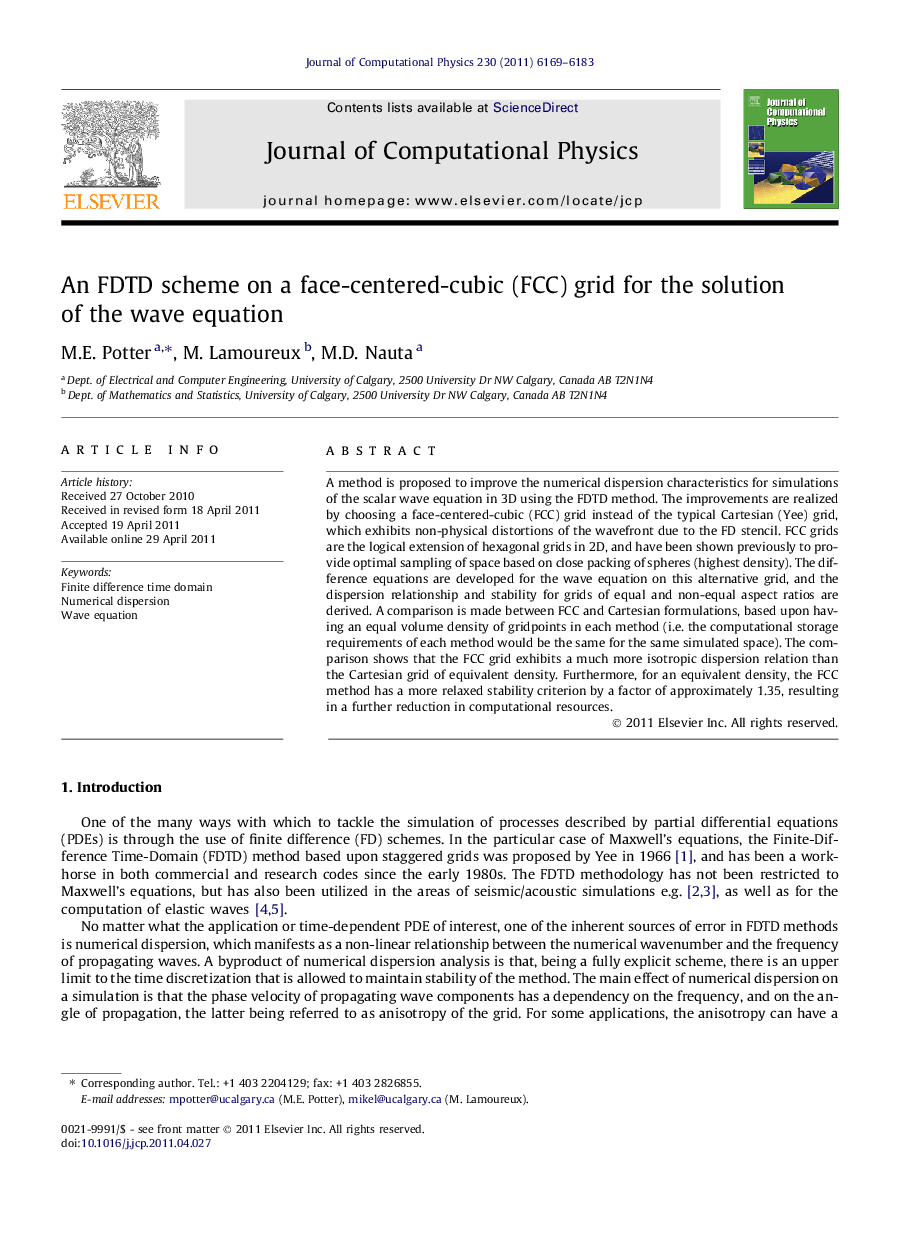| Article ID | Journal | Published Year | Pages | File Type |
|---|---|---|---|---|
| 519476 | Journal of Computational Physics | 2011 | 15 Pages |
A method is proposed to improve the numerical dispersion characteristics for simulations of the scalar wave equation in 3D using the FDTD method. The improvements are realized by choosing a face-centered-cubic (FCC) grid instead of the typical Cartesian (Yee) grid, which exhibits non-physical distortions of the wavefront due to the FD stencil. FCC grids are the logical extension of hexagonal grids in 2D, and have been shown previously to provide optimal sampling of space based on close packing of spheres (highest density). The difference equations are developed for the wave equation on this alternative grid, and the dispersion relationship and stability for grids of equal and non-equal aspect ratios are derived. A comparison is made between FCC and Cartesian formulations, based upon having an equal volume density of gridpoints in each method (i.e. the computational storage requirements of each method would be the same for the same simulated space). The comparison shows that the FCC grid exhibits a much more isotropic dispersion relation than the Cartesian grid of equivalent density. Furthermore, for an equivalent density, the FCC method has a more relaxed stability criterion by a factor of approximately 1.35, resulting in a further reduction in computational resources.
